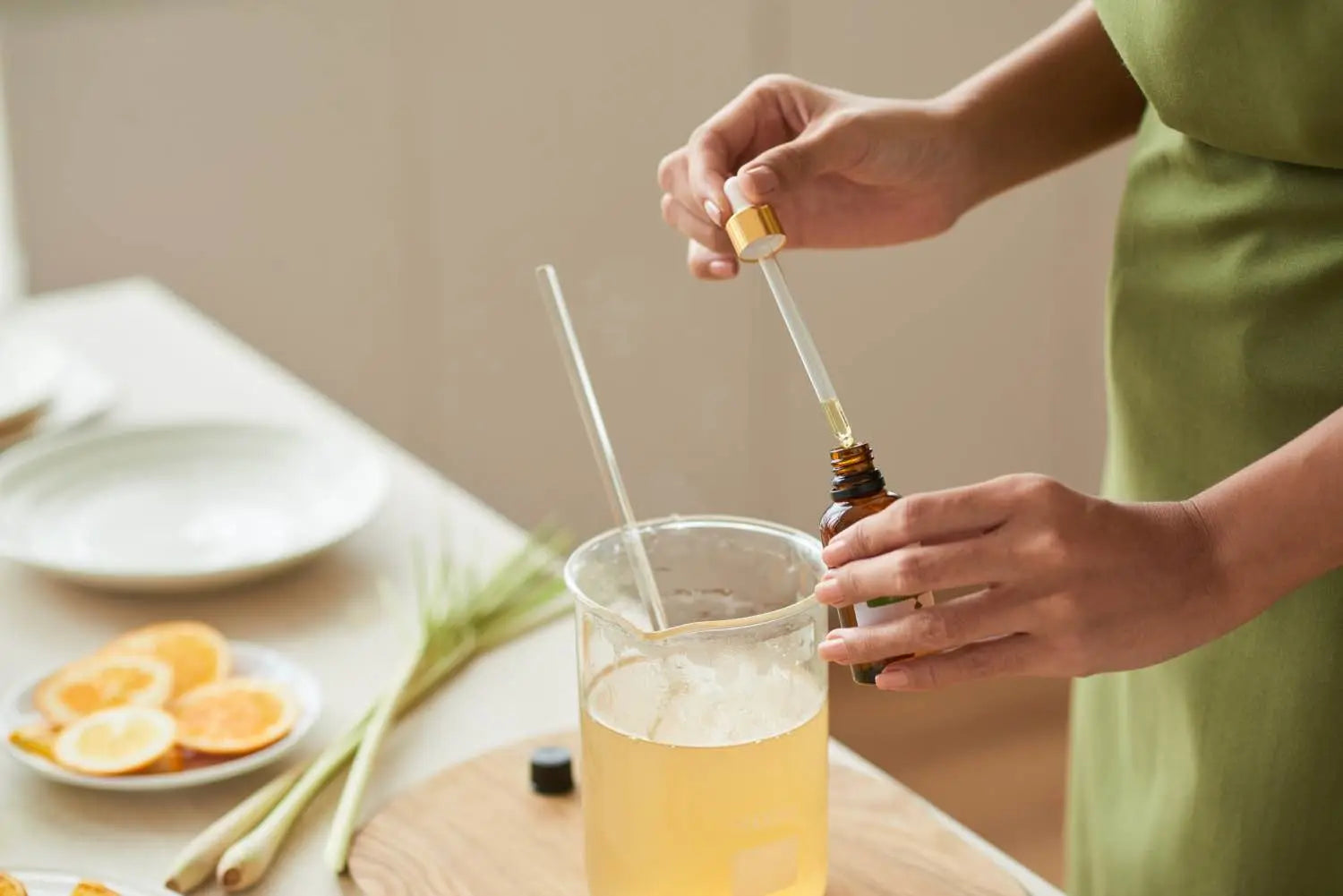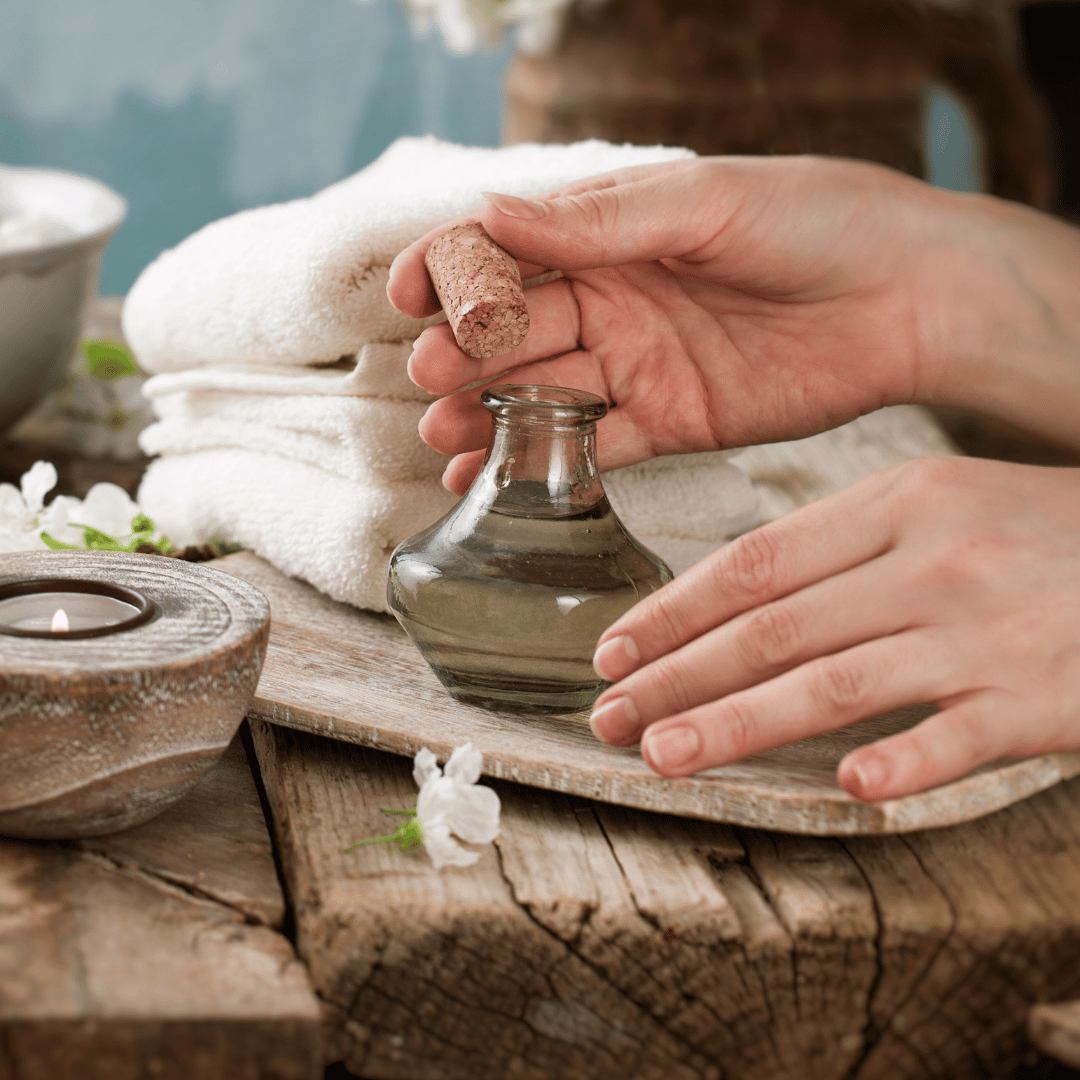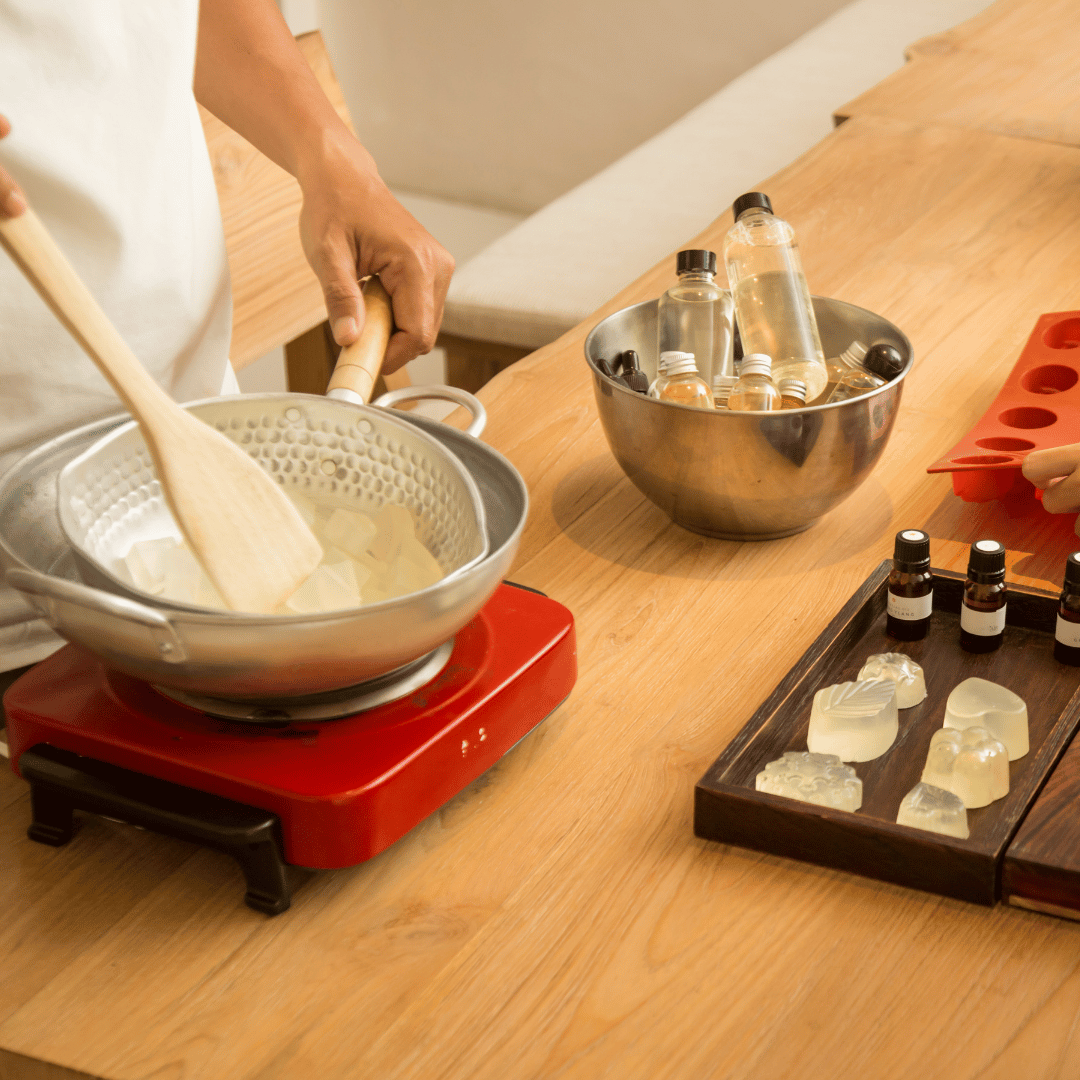When you’re working with an accelerating fragrance oil, how do you tweak your recipe or design? Or, do you embrace the acceleration and use it to your advantage with textured tops, layers, etc.?
Tweaking your recipe to account for acceleration is a balancing act, and it takes practice. There are several aspects of the recipe you can change to make the acceleration more manageable, including changing the design and avoiding certain additives. If the fragrance accelerates slightly and you tweak the recipe to include more slow-moving oils, that can also counteract the acceleration. But if the acceleration is extreme enough, no recipe or method can prevent it. Acceleration depends on so many factors.
Change Your Design
Non-accelerating oils are necessary when you’re creating a design that requires lots of time to work. Techniques like the spin swirl, column pour and funnel pour require lots of pouring and movement. If the soap becomes thick and no longer fluid, the design just won’t work. When using an accelerating fragrance oil, choose your design carefully. Some designs actually work better with a medium to thick trace, making them perfect for that fragrance oil. Such designs are spoon plops, textured tops, lots of layers and designs with embeds. If you’re determined to use an accelerating fragrance oil for a design that needs a well-behaving fragrance, sometimes you can get away with it if you tweak your recipe. But, we also recommend having a plan B in case the soap becomes thick. There have been many times we tried negate an accelerating fragrance oil with slow-moving oils, only to have it become pudding halfway through.

Change Your Oils
Tweaking the oils in your recipe makes a huge difference in how long it takes for soap to thicken. Some oils are considered “slow-moving.” Generally, these oils are lightweight and liquid at room temperature, like olive oil, rice bran oil, sweet almond oil and canola oil. If the oil or butter is solid at room temperature like palm oil, coconut oil, cocoa butter, etc., you can assume it will make your soap thicken more quickly.
When working with an accelerating fragrance oil, we plan the recipe around it and include more slow-moving oils than normal. we may avoid butters, because they can be a little bit more temperamental. we definitely stay away from beeswax and also soap with castor oil at 3% or less in the recipe. we have found that more than 3% castor in my recipe tends to speed up trace slightly. If we trying to avoid acceleration, our recipes are usually about 60% or more slow-moving oils, and 40% or less fast-moving oils.
Change Your Temperatures
The temperature of your lye solution and oils affects soap in many ways. For most soapers, the preferred temperature of soaping lye and oils is about 120-130 ° F. In general, warmer soaping temperatures speeds up trace, causing soap to become thick more quickly. If we creating a design that requires a lot of time to work, we tend to soap a little bit cooler than normal, around 100-120 ° F. If your recipe is moving a little bit faster than you’d like, try decreasing your soaping temperatures by 10-15 ° F. It can make a huge difference!
Change Your Additives
Some ingredients cause acceleration. If you’re using a fragrance that accelerates and want to prevent it as much as possible, skip these additives. Ingredients that contain sugar like honey, beer, wine, milk and purees increase temperature, which can speed up trace. Salt also speeds up trace, whether it’s added to the lye water (as shown here) or at trace (as shown here). Interestingly, We’ve found that sodium lactate (which is type of salt), doesn’t have a huge effect on trace when used at the correct usage rate. We use it in every single recipe, including recipes with accelerating fragrances and more complicated designs.
Ingredients that are known for their absorption properties also speed up trace. Such ingredients include clays, activated charcoal and titanium dioxide. Dispersing clay and other absorbing ingredients in distilled water can help negate some of the acceleration, but avoiding them completely is the best way to prevent acceleration.
Put Down the Stick Blender
Accelerating or not, We whisk in just about every fragrance oil at the very end. If we don’t care about the soap becoming thick, We might stick blend the fragrance oil in. But, if we are trying to avoid acceleration at all costs, we put our stick blender down and use it very sparingly. Using the stick blender accelerates soap, because it speeds up the emulsification process. If you choose to use the stick blender instead, be ready for the batter to become thicker whether or not you’re using an accelerating fragrance oil.
Avoid the Water Discount
Water discounting your recipe has a lot of benefits. It helps soap release from the mold faster and prevents glycerin rivers. But, removing water from the recipe causes soap batter to thicken more quickly. A water discount combined with an accelerating fragrance oil can lead to some pretty thick soap very quickly. If you’d like to learn more about how to water discount your soap and how it affects your batch, check out this post.


